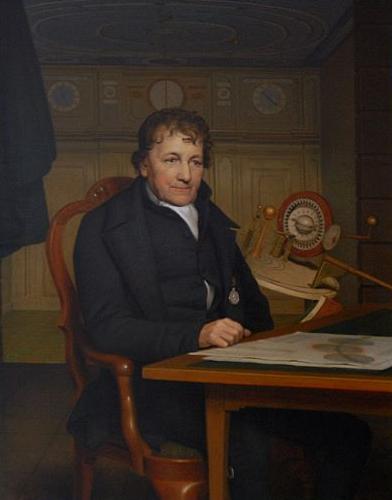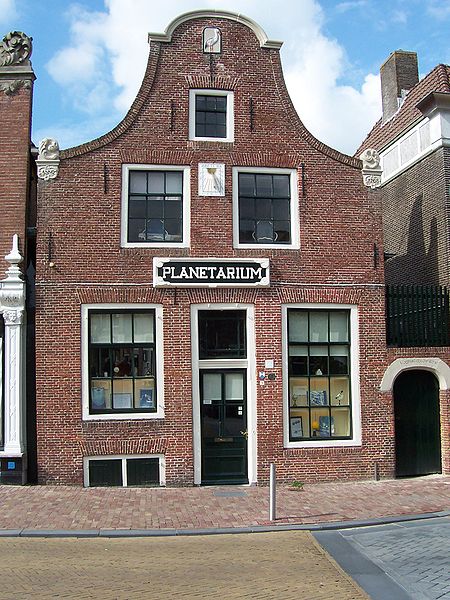<Back to Index>
- Astronomer Eise Jeltes Eisinga, 1744
- Writer Angela Anaïs Juana Antolina Rosa Edelmira Nin y Culmell (Anaïs Nin), 1903
- Prince Elector of the Margraviate of Brandenburg Joachim I Nestor, 1484
PAGE SPONSOR


Eise Jeltes Eisinga (Dronrijp, 21 February 1744 - Franeker, 27 August 1828) was a Dutch amateur astronomer who built an orrery in his house in Franeker, Netherlands. The orrery still exists and is the oldest functioning planetarium in the world.
Eisinga was the son of a wool carder, Jelte Eises from Oosterlittens and mother Hitje Steffens from Winsum. Although he was moderately gifted, he was not allowed to go to school. When he was only 17 years old he published a book about the principles of astronomy. Eisinga became a wool carder in Franeker, Netherlands. Through self - education he mastered mathematics and astronomy, which he also studied at the Franeker Academy. At the age of 24 he married Pietje Jacobs (? – 24 July 1788) and they had three children, one girl and two boys.
Due to a political crisis in 1787, he had to leave Friesland and went to Germany. Later he moved to Visvliet where he worked as a wool comber. He was banned from Friesland for five years and therefore stayed in Visvliet just across the border in Groningen. Meanwhile his wife died, and on 27 May 1792 he married Trijntje Eelkes Sikkema (21 February 1764) in Visvliet. They had one son and two daughters.
In 1795 he returned to Franeker. Eisinga became a professor at the Franeker Academy, until 1811 when Napoleon ordered it to be closed.
Eisinga died on 27 August 1828, at the age 84. On 8 May 1774 a conjunction of the moon and the planets Mercury, Venus, Mars, Jupiter would appear. Reverend Eelco Alta, from Boazum,
Netherlands, published a book in which he predicted that the planets
and the moon would collide, with the result that the earth would be
pushed out of its orbit and burned by the sun. Due to this prediction
there was a lot of panic in Friesland. To prove that there was no
reason for panic, Eisinga decided to build an orrery in his living
room. He expected to finish it within six months and eventually
finished it in 1781, 7 years after he started. During the same year
Uranus was discovered, but for this planet there was no room on the
ceiling of his living room, where the orrery was located. On 30 June 1818 King William I of the Netherlands and
Prince Frederik visited the orrery. King William I bought the orrery
for the Dutch state. In 1859 the orrery was donated by the Dutch state
to the city of Franeker.